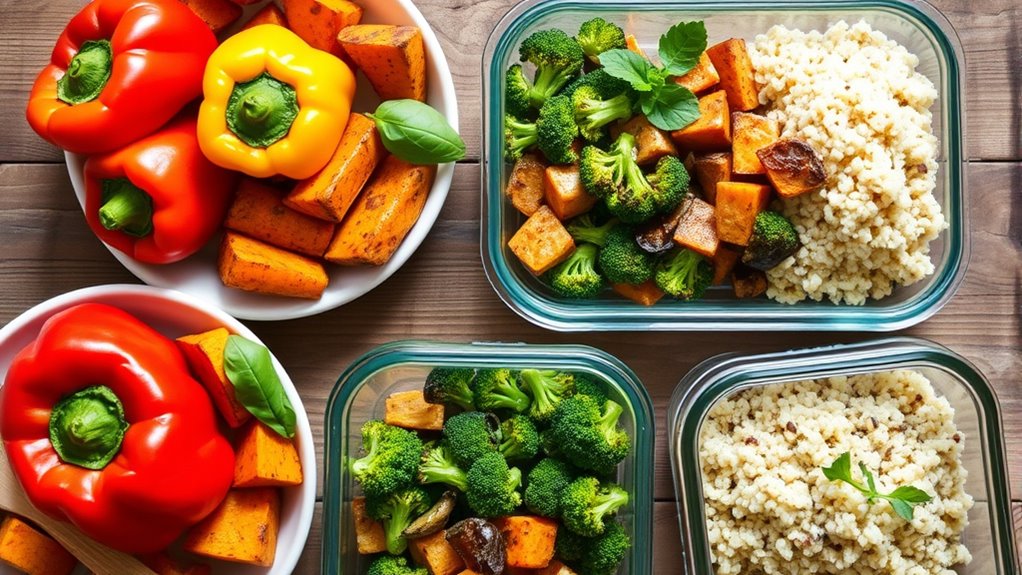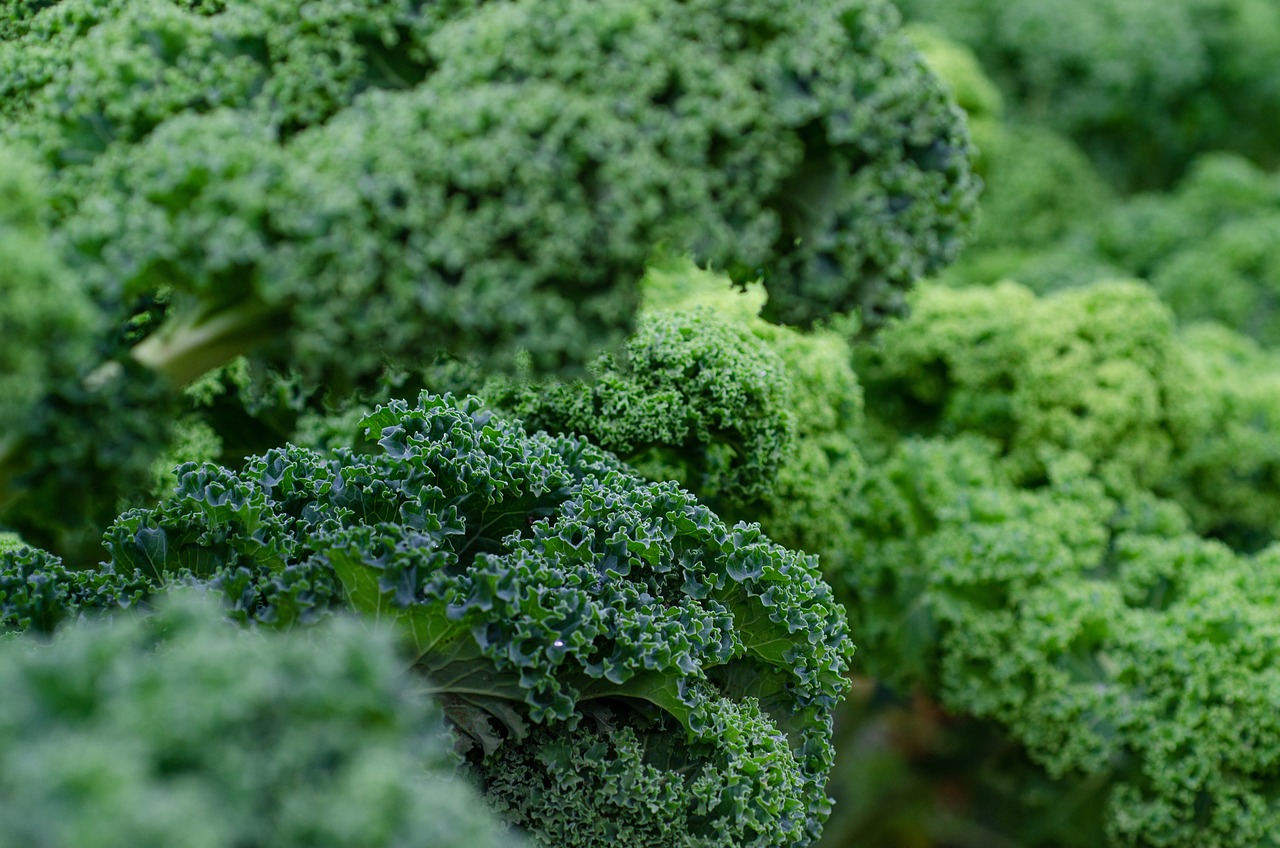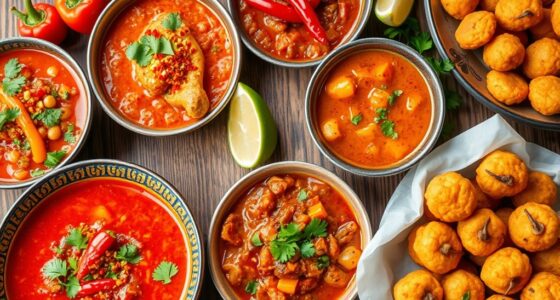Starting vegetarian meal prep is simple and rewarding. Focus on versatile ingredients like grains, beans, and roasted vegetables, and batch cook them for the week. Use airtight containers to store your meals, label them with dates, and plan your shopping accordingly. Incorporate a variety of plant-based proteins like tofu, lentils, and chickpeas to keep your meals interesting and nutritious. Keep your routine consistent—more tips to help you get started smoothly await if you continue.
Key Takeaways
- Focus on versatile ingredients like grains, vegetables, and plant-based proteins for simple meal prep.
- Batch cook staples such as grains, beans, and roasted vegetables to save time throughout the week.
- Use airtight containers and label meals with dates to maintain freshness and proper rotation.
- Incorporate a variety of plant proteins like tofu, lentils, and chickpeas for balanced, nutritious meals.
- Develop a weekly routine, dedicating specific times for prep to build consistency and reduce stress.

Preparing vegetarian meals in advance is an excellent way to save time, eat healthier, and stay consistent with your dietary goals. When you plan ahead, you eliminate the daily stress of figuring out what to cook and reduce the temptation to reach for less nutritious options. To get started, focus on simple meal prep tips that make the process manageable and enjoyable. Begin by choosing versatile ingredients that can be used in multiple dishes, like grains, vegetables, and plant-based proteins. Batch cooking large portions and dividing them into individual containers helps you streamline your week and guarantees you always have a nutritious meal ready to go.
Save time and eat healthier with simple, versatile vegetarian meal prep strategies.
One of the key aspects of successful vegetarian meal prep is incorporating a variety of plant-based proteins. These include beans, lentils, tofu, tempeh, and chickpeas. Not only are they rich in essential nutrients, but they also add texture and flavor to your dishes. Experiment with different seasonings and cooking methods to keep your meals interesting. For example, you can marinate tofu in soy sauce and garlic, then bake or stir-fry it for a quick protein boost. Lentils can be cooked in bulk and added to salads, soups, or grain bowls, providing both satiety and nutrition.
When planning your meals, think about how ingredients can be combined in multiple ways. Cook a batch of quinoa or brown rice at the start of the week, then use it for bowls, wraps, or side dishes. Roast a variety of vegetables like bell peppers, zucchini, and sweet potatoes, which can be added to salads or served as sides. Incorporate plant-based proteins into these bases to create balanced, satisfying meals. Having a well-stocked pantry with staples such as canned beans, grains, and spices makes it easier to whip up diverse dishes without much effort.
Storing your prepped meals properly is essential. Use airtight containers to keep everything fresh and label them with the date to track freshness. Keep perishable ingredients refrigerated and consider freezing portions for later use. This way, you can enjoy your vegetarian meals for several days or even weeks, depending on what you prepare. Additionally, understanding tea brewing and preparation techniques can help you relax and enjoy a warm beverage during your meal prep sessions.
Finally, make meal prep a weekly routine. Spend a few hours on the weekend or whenever suits your schedule to cook and portion out meals. As you gain experience, you’ll discover what ingredients and recipes work best for you, making the process quicker and more enjoyable. With consistent planning and smart choices in plant-based proteins, you’ll find that vegetarian meal prep becomes an easy, effective way to support your health and save time throughout the week.
Frequently Asked Questions
How Do I Store Vegetarian Meals Safely for a Week?
You store vegetarian meals safely for a week by using meal prep containers designed for refrigeration. Make sure to cool your meals quickly before sealing them tightly in containers. Label each container with the date and store them in the fridge at or below 40°F (4°C). Use proper refrigeration techniques, like organizing meals to allow airflow and avoid overpacking, ensuring your meals stay fresh and safe to eat throughout the week.
What Are Quick Vegetarian Protein Sources for Meal Prep?
Looking for quick vegetarian protein sources? Have you considered plant-based snacks like roasted chickpeas, edamame, or trail mix? These are easy to prep and pack. You can also use vegan protein powders in smoothies or overnight oats for an instant protein boost. Why not keep a stash of these handy options? They make your meal prep faster and guarantee you stay energized throughout the week.
How Can I Make Vegetarian Meals More Flavorful?
To make vegetarian meals more flavorful, you should experiment with spice combinations like cumin, paprika, and turmeric to add depth. Incorporate herb enhancements such as basil, cilantro, or parsley to brighten dishes. Toast spices before using to deepen their aroma, and add fresh herbs at the end for vibrant flavor. Combining these techniques will elevate your meals, making them more delicious and satisfying.
Are There Budget-Friendly Vegetarian Ingredients for Meal Prep?
Think of budget-friendly vegetarian ingredients as hidden gems waiting to be uncovered. For meal prep, you can use affordable staples like beans, lentils, rice, and frozen vegetables—these are the building blocks of nutritious, cost-effective meals. Incorporate budget-friendly snacks like nuts or popcorn to keep hunger at bay. With smart vegetarian meal planning, you’ll save money and enjoy delicious, satisfying dishes without breaking the bank.
How Do I Prevent Meal Boredom With Vegetarian Options?
You can prevent meal boredom by diversifying your vegetarian options with tasty snack ideas and breakfast options. Try new ingredients like quinoa, chickpeas, or tofu to keep flavors fresh. Incorporate colorful vegetables and experiment with different spices and herbs. Swap between hearty salads, wraps, and grain bowls. Planning a variety of snacks like nuts, fruit, or veggie sticks also keeps your meals exciting and satisfying throughout the week.
Conclusion
Starting your vegetarian meal prep journey is like planting a garden; with patience and consistency, you’ll watch vibrant, nourishing meals grow effortlessly. I once hesitated, but once I committed to planning ahead, my week became smoother—and I felt more energized. Remember, every small step adds up, turning mealtime into a rewarding experience. So, embrace the process and enjoy the fresh, colorful results—you’re cultivating a healthier, happier you, one meal at a time.
Ilana has been a vegan for over 10 years. She originally made the switch for health reasons, but soon found herself becoming more and more passionate about the ethical and environmental implications of a vegan lifestyle. Ilana is the author of The Graceful Kitchen, a blog all about veganism. She loves to cook up delicious and nutritious vegan meals, and share her recipes with others who are interested in leading a cruelty-free life. Ilana is also a strong advocate for using whole foods as the foundation of a healthy diet, and believes that going vegan is one of the best ways to achieve this.










